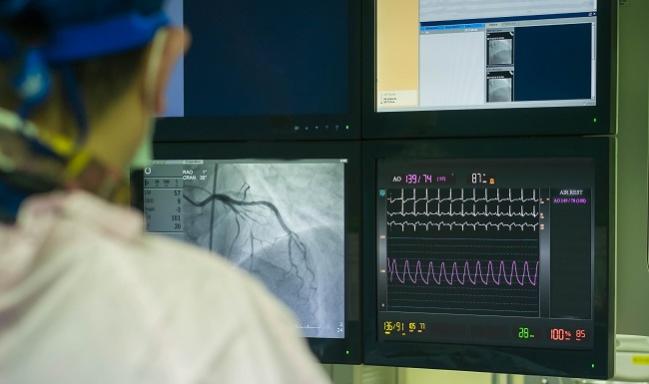Ionizing Radiation in CV Imaging: New Expert Consensus Document Aims to Inform Clinicians
The report summarizes the sources of radiation and the risks to both physicians and patients, with tips on how to keep doses down.

Amid rising use of cardiovascular imaging, an expert consensus document from the American College of Cardiology (ACC) and other professional societies is aiming to raise awareness among clinicians about ionizing radiation, its risks, and ways to limit exposure to both healthcare personnel and patients. In 2014 alone, Medicare beneficiaries underwent a total of 3.6 million cardiovascular procedures that involve ionization radiation, according to the report.
X-ray fluoroscopy, X-ray CT, and radionuclide scintigraphy are all described in depth within the paper, which was published online earlier this week in the Journal of the American College of Cardiology.
“This document was developed to be an accessible information source for cardiovascular practitioners, to give them a way to sit down and spend an evening reading and coming away knowing a lot more about radiation exposure and about the various [imaging] tests that they employ,” said John W. Hirshfeld Jr, MD (Hospital of the University of Pennsylvania, Philadelphia), who chaired the writing committee. He pointed out to TCTMD that cardiovascular imaging contributes “something on the order of 40% of all medical radiation delivered to patients.”
Clinicians should be well versed in what this can potentially mean in terms of cancer risk not only for patients but for themselves, he said. “The practitioner’s occupational exposure is directly proportional to the patient’s exposure, so the more you expose the patient, the more you expose yourself.”
Jargon-laden reports written by radiation specialists can be hard to follow for clinicians, “who lose interest in this fairly quickly. They find it hard to read,” Hirshfeld said. As such, many cardiologists “are not really sure what the implications of radiation exposure are, what constitutes a safe degree of exposure—if there is such a thing—and what constitutes an unsafe degree of exposure. [Also] many of us don’t understand how our machines work.”
Only by understanding the mechanics behind imaging can physicians take steps to reduce radiation, according to Hirshfeld.
While a number of society documents have addressed radiation exposure in cardiovascular medicine, these have “usually focused on one subtopic within the whole field,” he said, noting that the current document aims to be comprehensive, with sections on what the various radiation sources are, how doses are quantified, how to gauge risk, and how to adapt imaging protocols.
All of these things are sort of discussed loosely in corridors and in lounges, but people don’t really have the opportunity to ‘get down under the hood’ and really learn it. John W. Hirshfeld Jr
“The intent was to write something that clinicians would be interested in reading, because it was written by clinicians who know how clinicians think, and [something that] provided them with a lot of pragmatically useful information that they can apply in terms of their own efforts to spare radiation dose both to patients and to themselves,” Hirshfeld observed, adding, “All of these things are sort of discussed loosely in corridors and in lounges, but people don’t really have the opportunity to ‘get down under the hood’ and really learn it.”
As always, Hirshfeld said, the guiding principle for radiation is ALARA: as low as reasonably achievable.
Emmanouil S. Brilakis, MD, PhD (Minneapolis Heart Institute, MN), whose iC-CATARACT program has tracked radiation-related eye damage among interventional cardiologists, said the report does a great job at discussing appropriateness of imaging and the complexity of radiation-related risk. “They give many good tips and tricks,” he observed, but stressed that the document is much broader than that and still amounts to dense reading.
It is, however, “good to have a comprehensive document,” Brilakis agreed. “It’s very useful,” he said, not so much for “day-to-day reference” but as a repository of information.
The 69-page report was spearheaded by the ACC and produced in conjunction with the Heart Rhythm Society, North American Society for Cardiovascular Imaging, Society for Cardiovascular Angiography and Interventions, Society for Cardiovascular Computed Tomography, and Mended Hearts.
Caitlin E. Cox is News Editor of TCTMD and Associate Director, Editorial Content at the Cardiovascular Research Foundation. She produces the…
Read Full BioSources
Hirshfeld JW Jr, Ferrari VA, Bengel FM, et al. 2018 ACC/HRS/NASCI/SCAI/SCCT expert consensus document on optimal use of ionizing radiation in cardiovascular imaging: best practices for safety and effectiveness. J Am Coll Cardiol. 2018;Epub ahead of print.
Disclosures
- Hirshfeld and Brilakis report no relevant conflicts of interest.


Comments